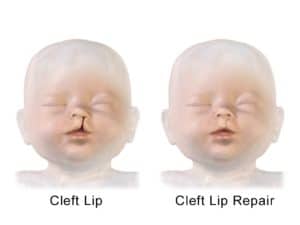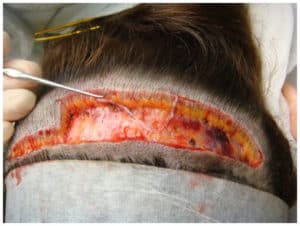Contents
show
What is blepharoplasty?
- Blepharoplasty (eyelid surgery) is a plastic surgery operation that is commonly performed to treat common signs of aging that develop around your eyes by MODIFYING the EYE REGION of the face by CORRECTING DEFECTS, DEFORMITIES, and DISFIGURATION of the EYELIDS.
- The skin of the eyelid is much thinner than that in other parts of the face and often one of the first facial areas to exhibit signs of aging due to the weakening of the muscles supporting the eyelids. The SKIN becomes SAGGY and Eye bags can APPEAR AS EARLY AS IN 20S due to STRESS or lack of sleep. DARK CIRCLES are caused by bulging of EYE BAG, giving an aged and EXHAUSTED APPEARANCE.
- Sometimes, Loose skin of the upper and lower eyelids may become droopy or baggy due to the aging process which may impair your vision for driving or other visual tasks.
- During a blepharoplasty, excess fat and skin UNDER the eyelids are removed from the eye region for a more youthful appearance. Improved appearance helps to boost self-confidence.
- Blepharoplasty can be done on both upper and lower eyelids depending on the patient’s satisfaction and the surgeon’s evaluation.
- This procedure can be performed on both adult men and women alike for a younger and more refreshed look that reflects across the whole face.
- Although this procedure can enhance appearance, it does not radically alter the face.
- A patient must have realistic expectations before undergoing cosmetic blepharoplasty.
Why do people undergo this surgery?
Aesthetic purposes-
- Improves the appearance of the eyelids.
- Rejuvenate puffy, sagging, drooping, or tired-looking eyes
- Reduce the number of fine lines seen around the outer corners and lower the lid of the eye.
- Restoration of lower lid tone and position
- Tightens eye muscles and tissue for a youthful appearance
- Removes excess fat and skin from the eyelids.
- Corrects tired-looking face by removing eye bags and fine wrinkles around upper and lower eyelids
Medical reasons-
- Difficulty wearing glasses or contact lenses due to excess sagging of upper or lower eyelids.
- Visual difficulties due to drooping of eyelids
- Excessive folds of eyelid skin rubbing together causing irritation.
- Puffy eyes are caused by eye allergies or edema.
Who can undergo Blepharoplasty surgery?
- Candidates with a good medical history.
- The candidates should be physically and psychologically fit.
- Individuals without serious eye conditions
- The Candidates who have realistic expectations about eyelid surgery.
- Non-smoker and non-alcoholic patients
Who to consult before performing a Blepharoplasty surgery?
Before going for blepharoplasty, you must have a combination of consultation with a plastic surgeon and an eye specialist (ophthalmologist) or a plastic surgeon who specializes in eye surgeries (oculoplastic surgeon).
What are the preparations before surgery?
- Visual examination–
- Visual acuity check by Snellen’s chart
- Visual field
- Ocular movements
- Globe position
- Shirmer’s test (DRY EYE) for tear production
- Rule out any ocular pathologies
- Any history of contact lens intolerance
- Physical examination to exclude any systemic diseases such as hypertension, diabetes etc.
- Eye photography from different angles must be performed which will aid in planning for surgery.
- Counseling to discuss the procedure, the potential risks, and benefits associated with the procedure
- Stop anticoagulant drugs and anti-inflammatory drugs such as warfarin, aspirin before surgery
- Quit smoking and alcohol several weeks before surgery.
What are the steps of the procedure?
- During an upper eyelid blepharoplasty, an incision is made within the natural crease or folds on the upper eyelid to remove some excess skin, muscle, and possibly fat.
- In lower eyelid blepharoplasty, the surgeon makes an incision just below the lower lash line (the eye’s natural crease) or inside the lower lid. The surgeon removes or redistributes excess fat, muscle, and sagging skin, and closes the cut. Another incision called a transconjunctival incision is created on the inside of the lower eyelid, is an alternate technique to correct lower eyelid conditions and redistribute or remove excess fat. With this technique, no skin is removed.
- Sutures or skin glue is used for closing the eyelid incisions.
Postoperative care
- Ophthalmic lubricating and moisturizing by using Eye drops and Ophthalmic ointment at night
- The Head should be kept elevated
- Use of Ice cold packs for 24 hours for at least 2-3 days
- Intermittent forced lid closure
- Avoid rubbing eyes
- Avoid drinking or smoking for 2-3 weeks.
- Use sunglasses to protect the skin of the eyelids from UV rays
- Sutures will be removed after 7 days
- Avoid Contact lenses for at least 2 weeks.
- Avoid Cosmetic fake lashes for the first 1 month.
Recovery after Blepharoplasty
- Blepharoplasty can be performed on an outpatient basis and you can go home shortly after the procedure.
- Recovery from eyelid surgery generally takes a few days to weeks.
- Bruising and swelling around the incision areas usually subside within 2 weeks.
- Scars from the surgery take months to fade.
What are the risks of eyelid surgery?
- Temporary blurring of vision
- Double vision
- Watering of eyes
- Dry eye
- Retrobulbar hemorrhage
- Eyelid infection
- Puffy eyes
- Numbness over the eyes
- Asymmetry of the eyelids
- Unfavorable scarring
- Unsatisfactory results (Undercorrection / Overcorrection)
- Corneal irritation
- Hypersensitivity reactions
- Suture abscess, granuloma
What will be the expected results?
- Many people get satisfactory results after blepharoplasty boosting their self-confidence and giving them a youthful and rested appearance that lasts over a lifetime as long as 10 years. While for others, droopy eyelids may recur.
- The aging process will however continue and the improved appearance due to an eye lift surgery will not last indefinitely. You might choose to repeat the procedure at some point in time in the future.
What are the Limitations of blepharoplasty?
- It cannot raise eyebrows
- It cannot treat deep wrinkles
- It does not improve dark circles under the eyes, or crow’s feet.
Eyelid surgery cost
- Blepharoplasty price varies depending on:
- Surgeon’s fee varies according to degree and qualifications
- Hospital facilities and staying costs
- The country/region where you live
- The extent of eyelid surgery you need
- Medications and drugs
- Most health insurance does not cover cosmetic surgery or its complications.
- According to statistics from the American Society of Plastic Surgeons. The average cost of cosmetic eyelid surgery is $3,282.
Liked this article? You can find other plastic surgery articles here: Surgery – Costamedic



![Read more about the article Breast augmentation surgery – cost, recovery, FAQs [5 minutes read]](https://costamedic.b-cdn.net/wp-content/uploads/2021/02/Breast-augmentation-surgery-implant-300x200.jpg)